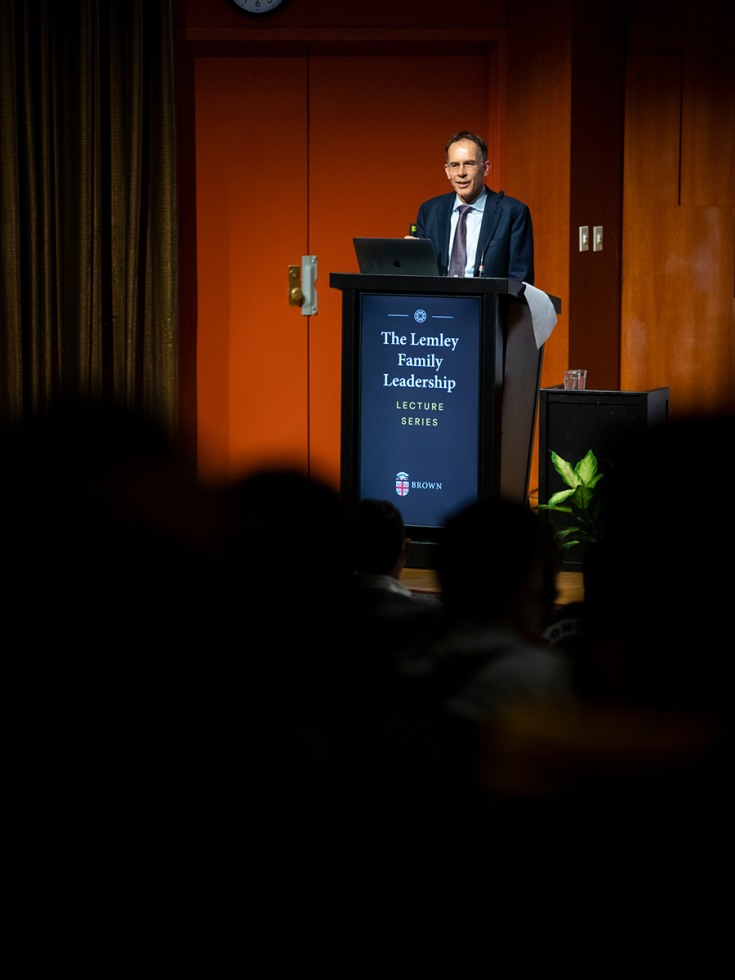But using natural experiments to determine causality is often not straightforward, Imbens said. In a controlled experiment, great pains are taken to make sure the experimental group and the control group are very similar. In a randomized drug trial, for example, the only real difference between the two groups is that one received the drug and the other didn’t. That enables researchers to conclude that any differences in outcome between the groups were due to the drug, and not something else.
Natural experiments, however, are never quite so clean. Imbens gave the example of trying to determine the effect of military experience on people’s future labor earnings. One could attempt to simply compare the earnings of veterans to non-veterans, but those two groups could differ in many other ways besides their military experience.
“For example, during World War II, veterans were higher educated than non-veterans,” Imbens said. “So if you just compare their earnings, they may be due not to the fact that they served in the military and what they learned there, but just due to the fact that they had higher levels of education.”
Imbens’ work has focused on ways to minimize these confounding variables in natural experiments. In one example, he took advantage of a one-year gap in compulsory military service in the Netherlands — Imbens’ native county — to help determine how military service impacts earnings. In the 1980s, the Netherlands had more military conscripts than were needed, so the government exempted men born in 1959 from having to serve. So Imbens compared the adult earnings of that 1959 cohort that didn’t have to serve in the military to cohorts from 1958 and 1960, which did have to serve. He showed that the cohort that didn’t have to serve actually had higher future earnings than those who were required to serve.
Imbens has used similar approaches to explore a range of subjects, from the factors that cause homelessness to the effects of college education on earnings. He recently used data from lottery winners to investigate the potential effects of a universal basic income on labor participation.
Much of that work is based in a highly influential framework for causal inference that he outlined with colleague Joshua Angrist in 1996 in the Journal of the American Statistical Association, which helped them capture a share of last year’s Nobel. Their framework has been cited in scientific studies more than 6,000 times, and it has enabled hundreds of experiments exploring causal relationships — such as relationships between income and health, immigration policy and the labor market, and lockdowns and the spread of infection.
Imbens credited his graduate studies at Brown for helping him to apply his skills to real-world problems. “It really helped me transition from being a very technical econometrician to a more rounded economist,” he said.
Imbens said that as an undergraduate, he was not always quite so successful in connecting his studies with the real world. He recalled an undergraduate macroeconomics class in which he and his classmates studied models in which actors used money to buy either goods or bonds. It wasn’t until the final exam drew near, Imbens said, that he realized that he had no idea what a bond actually was.
“I started asking around, and it turned out that nobody in my class had any idea what bonds were either,” he said. “We were doing perfectly fine in the class — doing all the mathematics and doing all the questions that were asked at the exam, but we actually had no idea what we were doing and what it meant and what it corresponded to.”
That disconnect began to change as he pursued his economics doctorate in Brown’s program, Imbens said.
“It was really terrific in… focusing us on what the real questions were, and making sure things were actually tied to what was going on in the real world,” he said. “It put me in a much better position to start doing research that has at least some chance of having an impact.”
There’s little doubt that Imbens’ work has been impactful. He has a Nobel Prize to prove it.
